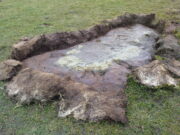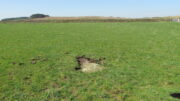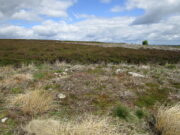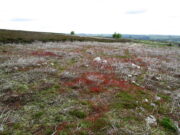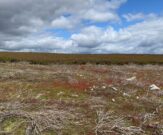Stone Circle (destroyed): OS Grid Reference – NO 173 342 (approximation)
Archaeology & History
In an archaeological report by Alexander Hutcheson for the Scottish Society of Antiquaries in 1884, he described and illustrated an impressive cup-and-ring stone that was formerly built into the walls of a demolished house ¾-mile from its original position near Meikle Whitefield farm. Upon destruction of that house, the farmer of West Whitefield—a half-mile from its original position—then moved the stone it into his front garden. According to tradition, said Hutcheson, this stone
“was originally removed from a circle of stones, which had stood about half-a-mile eastward, but which have now been buried or broken up.”
Despite the local tradition, Hutcheson was some what sceptical of it, thinking that it
“seems very unlikely that such a weighty stone should have been transported for half a mile merely to serve as a foundation stone for a cottage, when the ground around was capable of supplying as many stones as would be required.”
You can see his point; but there are known circumstances where individual stones from megalithic rings have been preserved. Hence, like John Barnatt (1989) in his magnum opus who preserved the folk memory of such sites, we include it here. The tradition may well be valid. Added to this is the fact that in just a few square miles hereby we once had a large cluster of stone circles, a few of which still remain.
Refeences:
- Barnatt, John, Stone Circles of Britain (2 volumes), BAR: Oxford 1989.
- Hutcheson, Alexander, “Notice of a Cup and Ring-marked Stone, and of Incised Stones Recently Discovered at Cargill, and of an Incised Boulder at Fowlis Wester,” in Proceedings Society Antiquaries Scotland, vol. 18, 1884.
© Paul Bennett, The Northern Antiquarian

